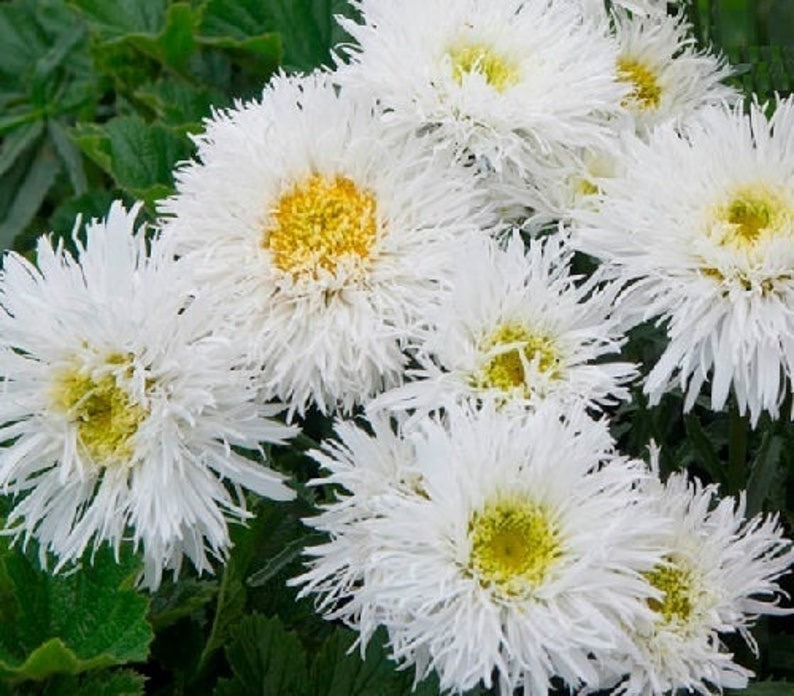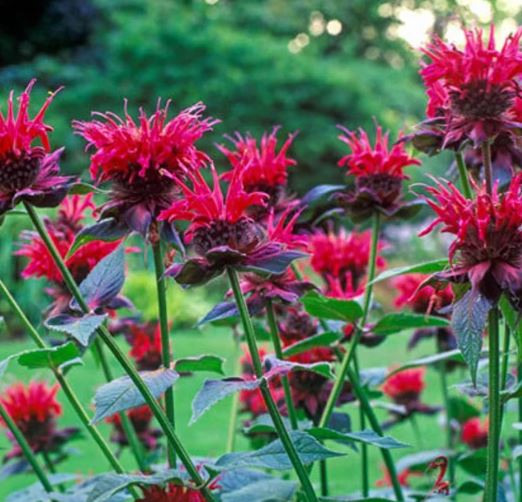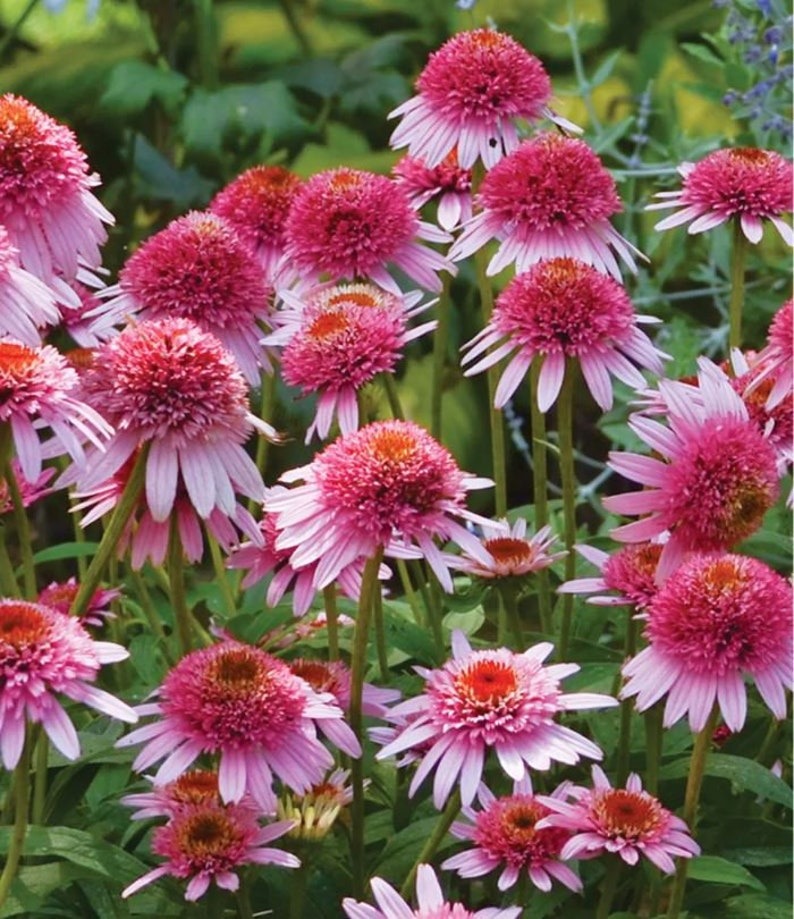
Guide to Shasta ‘Crazy Daisy’
Crazy Daisy
- Appearance: Shasta ‘Crazy Daisy’ is a perennial flower that features large, daisy-like flowers with white petals and a bright yellow center. It has a classic, cheerful appearance that is characteristic of Shasta daisies.
- Height and Spread: This variety typically grows to a height of around 24 to 36 inches (60 to 90 cm) and has a spread of approximately 18 to 24 inches (45 to 60 cm). Its upright growth habit and abundant flowers make it a standout in the garden.
- Blooming Season: Shasta ‘Crazy Daisy’ blooms from early to late summer, producing numerous flowers on sturdy stems. The long blooming season adds a splash of white and yellow color to the garden for an extended period.
- Low Maintenance: Shasta daisies, including ‘Crazy Daisy,’ are generally easy to grow and require minimal maintenance. They are adaptable to various soil types and can thrive in full sun to partial shade conditions.
- Attracts Pollinators: The large, showy flowers of ‘Crazy Daisy’ are attractive to pollinators such as bees and butterflies. These insects play a crucial role in pollination and contribute to the overall health and biodiversity of the garden.
- Cut Flower and Bouquet Use: Shasta daisies are popular for cut flower arrangements due to their long stems and long-lasting blooms. ‘Crazy Daisy’ can be cut and used in floral displays, adding a touch of elegance to indoor spaces.
- Garden and Landscape Use: Shasta ‘Crazy Daisy’ is a versatile plant that can be used in various garden settings. It works well in borders, cottage gardens, or as part of mixed perennial beds. Its white and yellow flowers create a vibrant contrast and provide a classic, timeless charm to any landscape.
Care Guide
- Sunlight: Shasta daisies prefer full sun to partial shade. They need at least 6 hours of direct sunlight each day to thrive and produce abundant blooms.
- Soil: Plant in well-draining soil that is rich in organic matter. They can tolerate a range of soil types, but good drainage is essential to prevent root rot.
- Watering: Water newly planted Shasta regularly to establish the roots. Once established, they are relatively drought-tolerant and can withstand periods of dryness. Water deeply when the top inch of soil feels dry, but avoid overwatering, as this can lead to root rot.
- Mulching: Apply a layer of organic mulch around the base of the plants to help retain moisture, suppress weeds, and regulate soil temperature. Maintain a gap between the mulch and the stems to prevent stem rot.
- Fertilization: Shasta daisies generally don’t require heavy fertilization. However, you can apply a balanced, slow-release fertilizer in spring to provide some nutrients. Follow the package instructions for application rates.
- Pruning: Deadhead spent flowers regularly to encourage continuous blooming and prevent self-seeding. Cut the flower stems back to the basal foliage or trim the entire plant back by one-third after the blooming season to promote tidy growth.
- Division: Over time, Shasta daisies can become overcrowded and lose vigor. Divide them every 2 to 3 years in early spring or fall to rejuvenate the plants. Dig up the clumps, separate them into smaller sections, and replant them in well-prepared soil.
- Pests and Diseases: Shasta daisies are generally resistant to pests and diseases. However, they can occasionally be affected by aphids, slugs, or powdery mildew. Monitor the plants regularly and take appropriate measures if any issues arise.
- Winter Care: Usually hardy perennials that can withstand winter temperatures. However, in colder regions, apply a layer of mulch around the base of the plants to protect the roots from freezing temperatures.




